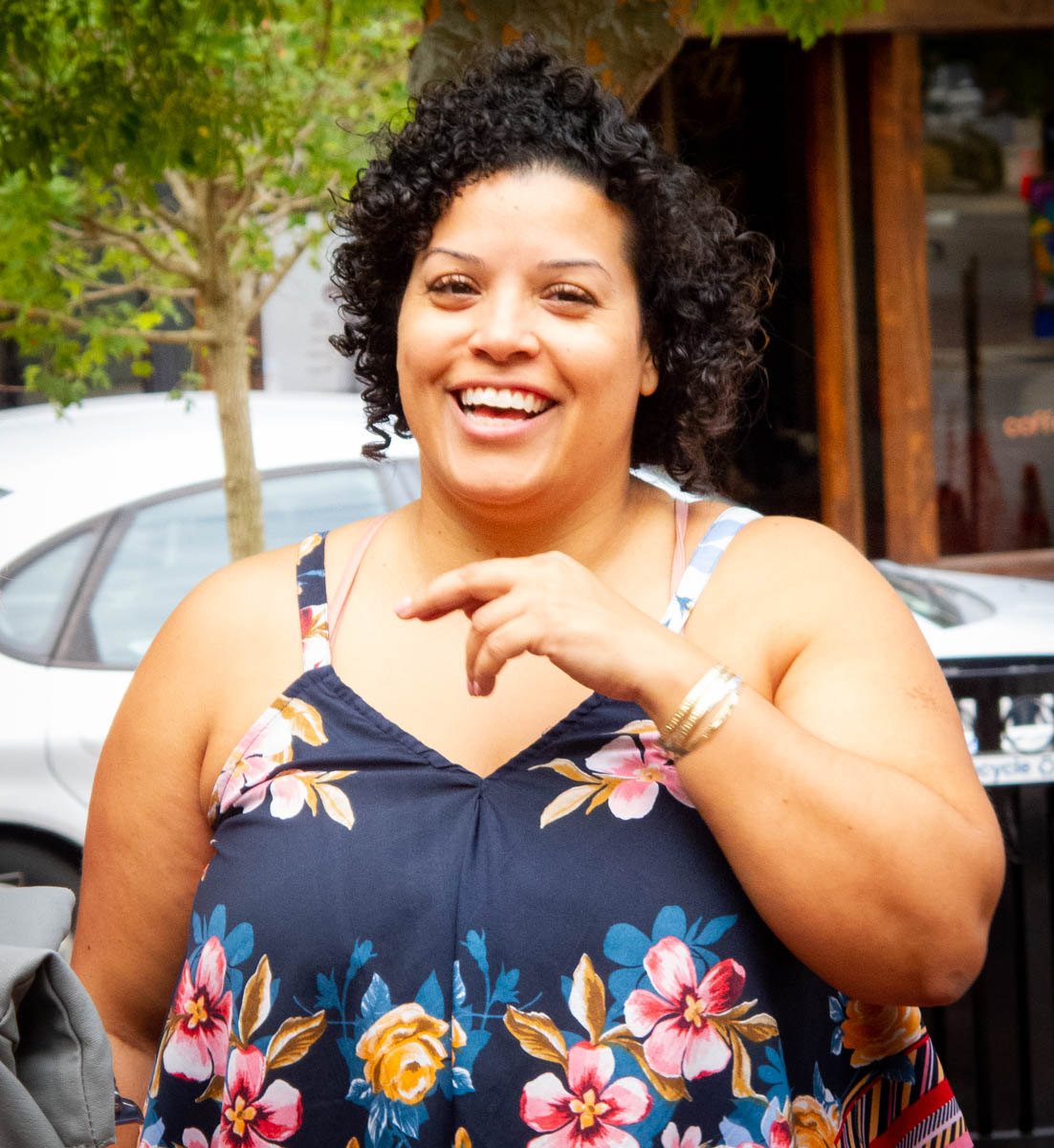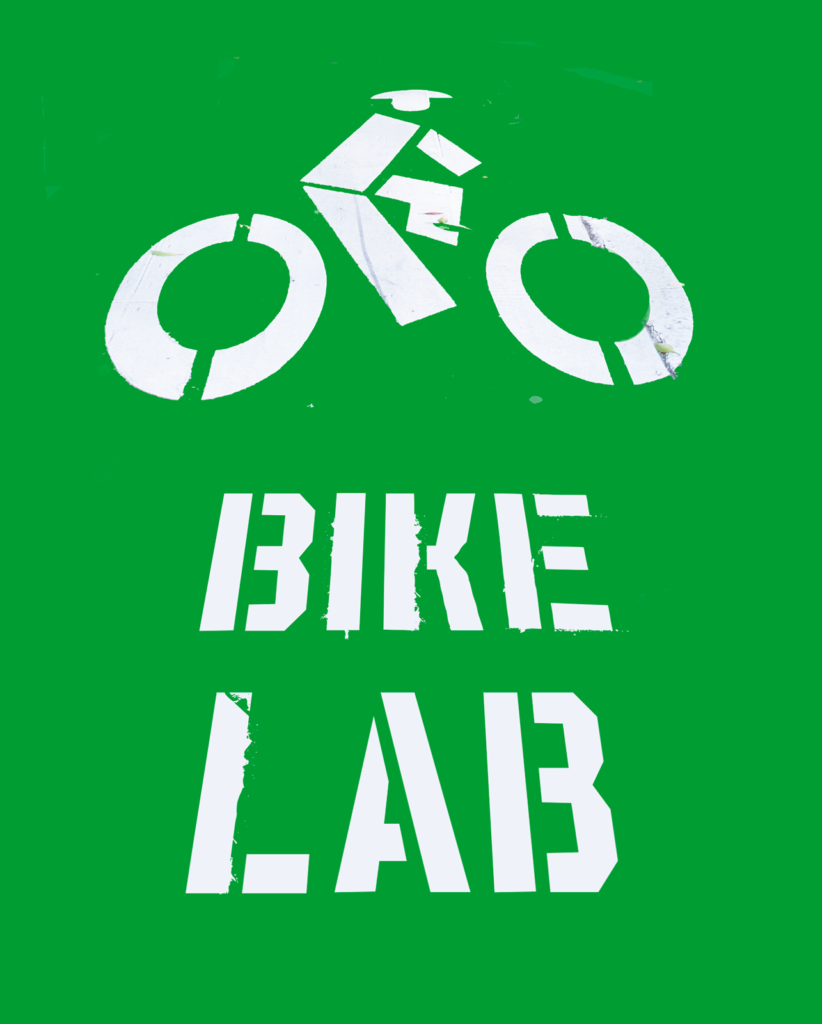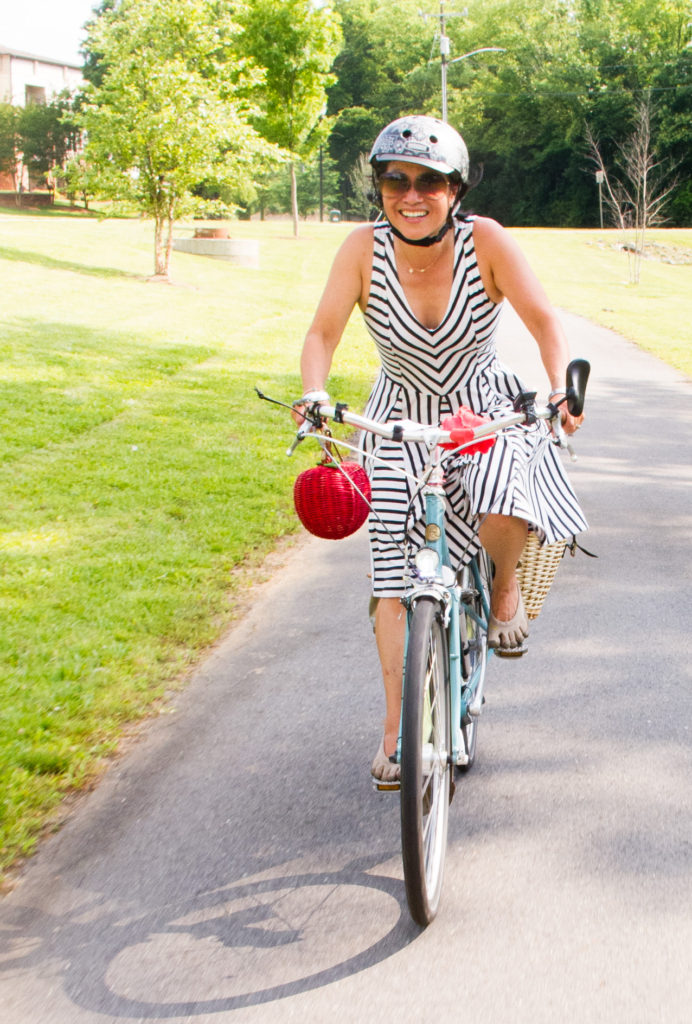 Aidil Ortiz, the lead organizer of Untokening Durham, came into city planning work from a background in public health, and he perspective reflects that somewhat unusual path. In addition to doing great work organizing the event, she gave probably my favorite talk of the conference, about her work on community engagement for the Durham Belt Line, a rails-to-trails greenway project on the outskirts of downtown.
Aidil Ortiz, the lead organizer of Untokening Durham, came into city planning work from a background in public health, and he perspective reflects that somewhat unusual path. In addition to doing great work organizing the event, she gave probably my favorite talk of the conference, about her work on community engagement for the Durham Belt Line, a rails-to-trails greenway project on the outskirts of downtown.
Her session was fantastic, and also relevant to Oakland’s bike plan (and, I hope, others).
“Green infrastructure is not innocent”
Ortiz’s interest in the Belt Line project stemmed from concerns about its potential to spur the kind of gentrification and displacement currently being experienced in downtown Durham. She began with the assertion that “green infrastructure is not innocent.” The Belt Line project exists as part of a system of historical oppression, and it has the potential to deepen historical divisions and inequities.
The language of the project Master Plan employs typical tropes related to creative class economic development:
The Master Plan recommends walkable mixed-use development types along the trail to maximize return on investment….[T]he design challenge was to turn a corridor which served as “backdoor” for nearly a century into a “front door.” This concept shows how the Durham Belt Line can provide a gateway into Durham’s Innovation District and how new trailside infill development can take advantage of the trail as an amenity.
After the master plan was presented to the public in August 2018, community concern prompted the city to develop an equitable engagement plan, which is where Ortiz got involved.
Ortiz outlined the problems of the usual community engagement process on a design project. A large contract will go out for RFP (Ridiculous Fucking Process, I say). It will have extra selection points available for organizations led by people of color, but locally, there are no POC-led organizations which can win a bid on the entire project, so the contract will go to an organization from out of state which has no connections in the community. For a $100K project, they’ll charge $40K to do four community meetings, and those will net comments from about eight residents, because the usual suspects (urbanist geeks like me) will show up at more than one meeting. $5K per resident engaged is pretty bad return on investment.
Every community has existing organizations which are already talking with people about what they need, already convene regularly, and already reach hundreds or thousands of residents. Ortiz asked, why are we giving money to outside consultants to do crappy engagement work when we have groups in the city for whom engagement is their primary function?
She made a distinction between the more generic “Community-Based Organization” and what she termed a “Community-Rooted Organization.” Some nominal CBOs don’t do much grassroots work and don’t have the kind of connection to the community they’d need to do the engagement. Community-rooted partnerships tap into the work grassroots organizations are already doing. And, she noted, you don’t need new money; you just need to take that $40K that the city is spending anyway and give it to the grassroots instead of the outside consultants.
“Asking community groups to be involved without paying them is bullshit.”
What actually happens in most cities is that the traditional consultants get the $40K, and then they ask the community-rooted organizations to show up for the session the consultants are being paid for. As Ortiz put it, “Asking community groups to be involved without paying them is bullshit.” Oboi Reed prefers the phrase, “Fucking pay us”; he is tired of being asked to participate in conferences or panels, presumably as a leader in the field, without being offered travel expenses or honoraria. If we’re willing to pay MIG for their expertise about design, we should be willing to pay community-rooted organizations for their expertise about their community.
Someone asked a question about what the traditional consulting groups thought about the idea. A representative from MIG was in the room, and she said, “We’ll do whatever the contract says. We actually prefer it this way; we’re not good at engagement anyway, we want to do the things we’re good at.”
Oakland implemented a similar engagement model in its bike plan outreach, and its structure might be useful in other places. Oakland first ran an RFP for a consultant pool for community engagement, which was written so that real community-rooted organizations could win the bid. Then when it came time for the big consulting contract, that RFP (awarded to Toole Design and Alta Planning) stipulated that engagement would be done by groups selected from the local consultant pool. The process took longer, but everyone I’ve talked to has said the outcome was richer and more valuable for it.
When Mayor Schaaf attended the August BPAC meeting I asked her if the engagement model from the bike plan would be used for other projects in Oakland. She acknowledged that the bike plan engagement was successful but noted the limitations that it takes more time and possibly more funding. [My counter-point: If you want to foreground equity in your processes, you need to spend that time and that funding. To leave it out leaves out the equity.]
Ortiz made a helpful suggestion, which is to do the community outreach before beginning the project. This seems like it should not be a novel idea, but the grant process isn’t structured to allow it. Once you apply for funding, the project scope and timeline become much less flexible. Good engagement about community needs before a grant application could improve both the proposal and the project, but the grassroots outreach would have to be paid from some other pot of money. The City Council could create a fund for community-rooted partnerships, or outreach could chosen as part of a participatory budgeting process.
“We need Harriet Tubman and Frederick Douglass”
Historical inequities run too deep to have any single solution. As Ortiz put it, “we need Harriet Tubman and Frederick Douglass”: short-term interventions as well as long-term structural change. The short-term intervention, she suggests, is for Black and POC-led groups to register their organizations as 501(c)(3)s or LLCs so they can be included in RFP processes. In Oakland, that worked for Bikes4Life, Cycles of Change, and the East Oakland Collective, and our outcome is better for it.
Long-term, we need to change the processes so that community engagement is always the first thing done and is always led by community-rooted organizations. That starts with the granting agencies, from the city up to the regional, state, and federal levels, and changing it will take a while. For now, let’s think about how to hack the existing processes to achieve better outcomes.
https://www.youtube.com/watch?time_continue=8&v=0twc3RJuGm4
“I just feel like you’re mad at trails”
We often fail to comprehend the source of community resistance. Ortiz said that when she began organizing for better community engagement, one of the project leaders told her that, “I just feel like you’re mad at trails.” This is a fundamental mis-understanding of what’s going on. Disadvantaged communities don’t necessarily object to the specifics of the greenway or the bike lane. They object to the project being yet another example of someone from outside making decisions which affect their community, without real input from the people affected. Ortiz notes, “I love trails. Harriet Tubman built a trail system across five states with no government funding!” But if the process isn’t inclusive, it can reinforce the structural disadvantages which the community already endures.
Conclusion
I have to thank and commend Aidil Ortiz and the rest of the organizing team for developing a powerful program for the weekend. It was illuminating, challenging, and in the end, hopeful. In Durham, as in Oakland, there are enough people who care, and enough opportunity to push back on power structures, that we might be able to make some progress.


